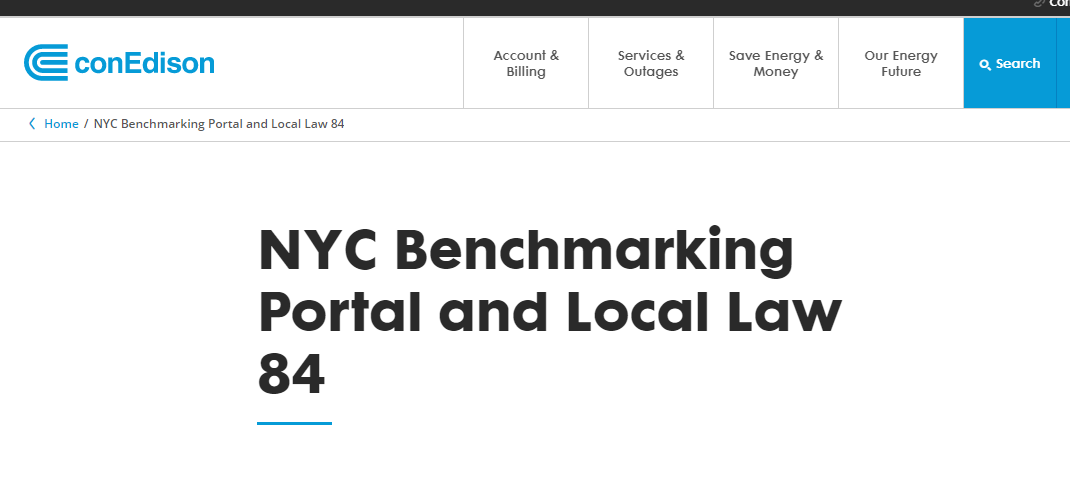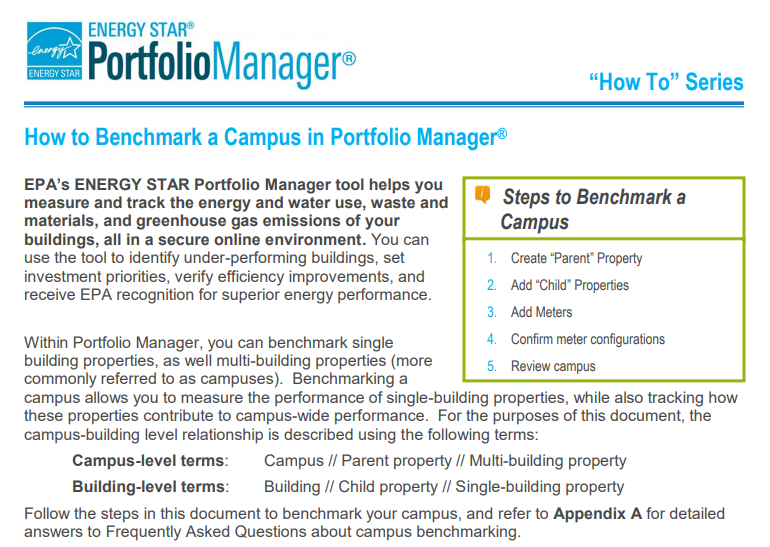NYC LL84 Benchmarking: Lessons Learned
Key Takeaways From 2019 Benchmarking Season
Compliance with the NYC Benchmarking Law, Local Law 84, requires building owners to annually measure and report their energy and water consumption. The benchmarking process is standardized through the utilization of the EPA’s online benchmarking tool, Energy Star Portfolio Manager, to enter and submit energy and water usage data to the City. Usually, the deadline for benchmarking data submission is May 1st. Due to COVID-19, the deadline for 2019 data submission was extended to August 1st.
Benchmarking compliance is important because it provides data to measure and track progress toward goals set out in the City’s Climate Action Plan, including a 40% carbon reduction by 2030 and an 80% carbon reduction by 2050 relative to 2005 levels. In addition, starting October 2020, NYC buildings will be required to display grades based on Energy Star efficiency scores as per Local Law 95. The energy efficiency grading will function similarly to the Health Department’s restaurant inspection grades, and will represent a building’s commitment to energy efficiency to building residents, occupants, and pedestrians.
Although benchmarking is important, it is by no means simple or easy. At Gotham 360, we recently completed 2019 benchmarking for 280 properties covering more than 50 million square feet. Here are our top three takeaways for making your next benchmarking season a success.
1. Start EARLY
Depending on the size of your portfolio, gathering all of the information required for benchmarking can be a lengthy and time-consuming process. Tracking down energy consumption data and building use details often requires coordination from individuals spread across your organization, including energy analysts, facilities managers, and even tenants. Since benchmarking is completed annually, people who helped with benchmarking efforts in the past may have moved onto other roles. To save yourself a headache and avoid unnecessary stress, don’t wait until the last minute. Start early and stay organized. When requesting building use information, give people plenty of time to respond. If possible, submit your benchmarking reports to the city at least two weeks ahead of the deadline to allow time for updates and corrections.
2. Use Con Edison's Benchmarking Portal
ConEd’s NYC Benchmarking Portal supports the automatic uploading of whole building aggregated data to Energy Star Portfolio Manager. ConEd provides an extensive user guide which explains how to use the tool. The benchmarking portal is relatively intuitive and a huge time-saver, but it’s not perfect. Common issues include problems with the association between service addresses and NYC borough block lot (BBL) numbers. In some cases, the service address associated with a ConEd account will not accurately reflect your Portfolio Manager property setup. Also, if an account is shared across multiple buildings, ConEd will associate that account with the service address without dividing the usage across buildings. The benchmarking portal is a useful tool to learn and utilize, but the data it provides should always be reviewed and verified.

3. Be Careful With Campuses
In NYC, multi-building properties are common. Energy Star Portfolio Manager refers to these properties as campuses. Benchmarking a campus is more complicated than benchmarking a single-building property, and Portfolio Manager provides this six-page guide to help with the process. Any set of buildings that belong to a single BBL or any set of buildings that share a system must be reported as a campus. A campus is made up of a parent property, which encompasses all buildings in the property, and child properties, which represent the individual buildings belonging to that property. The system (e.g., meter) that is shared across buildings should be reported at the parent property level. Any meters that serve individual buildings only should be reported at the child property level, as well as the parent property level. When submitting a campus for benchmarking, make sure that you submit parent properties as well as all child properties, even if child properties have no meters associated with them, in order to avoid a violation from the city.

If you or your organization need assistance with Benchmarking Compliance or planning for 2020 Benchmarking season, please reach out to us at
By:
Eve Marenghi